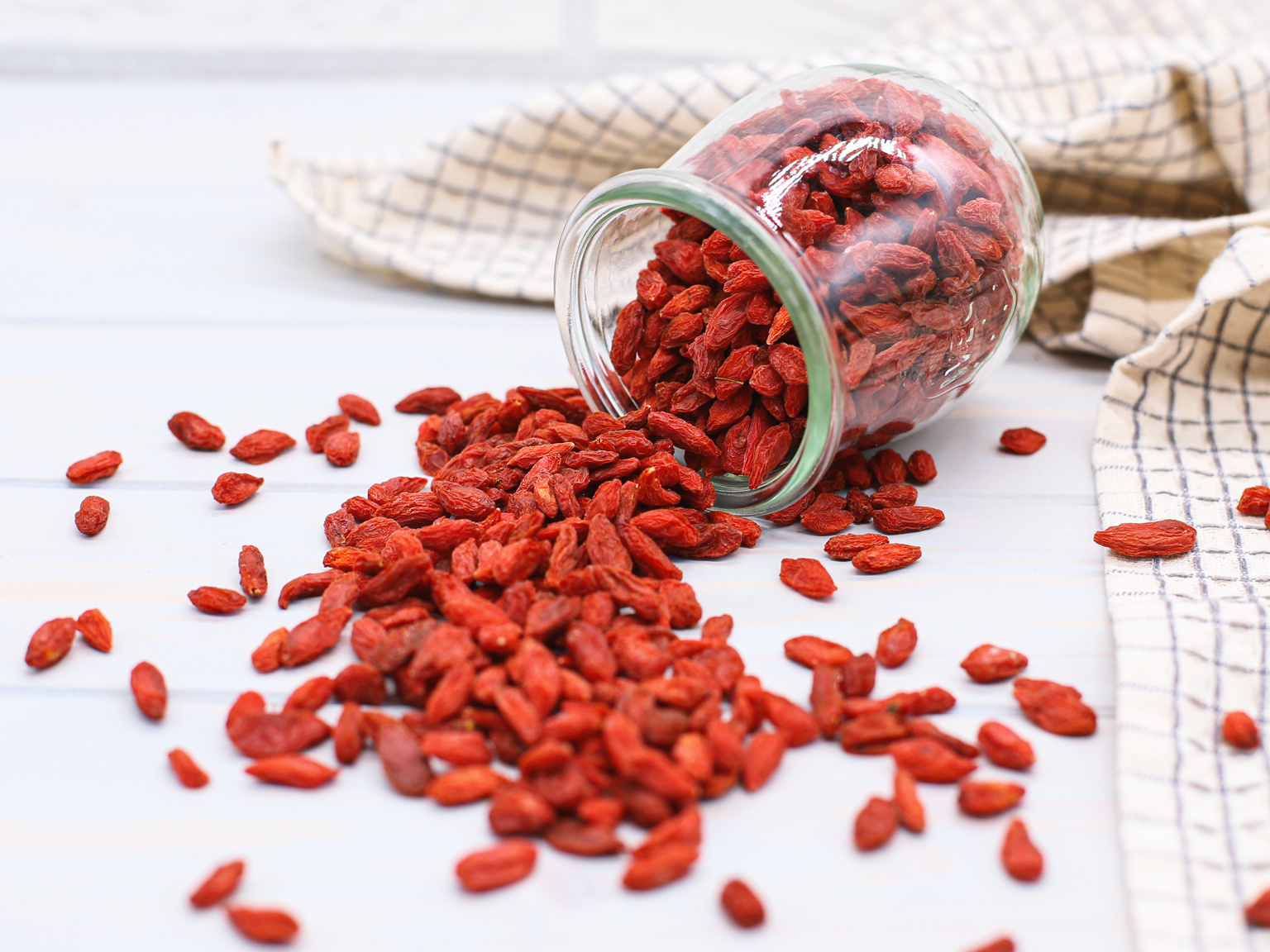It was such a moment when goji berries suddenly appeared out of the blue. And everybody started talking about them! Goji immediately became a buzzword and a cool kid. And, of course, a staple ingredient in everybody’s pantry. But Lycium barbarum and Lycium chinense, that bear fruit we know as goji berries (in English they have another name – wolfberries), are native Asian species that have been used in cooking for quite a long time. The fruit has been used as a medicinal ingredient at the dawn of the New Era, long before it gained its reputation as a health product today. Let’s make it clear: its health benefits are exaggerated and unproven, so don’t take it too seriously. If you want to try it, don’t swear by it, just go for its culinary benefits.
Goji berries are usually sold in dried form. Commercially available variety is usually bright brick red (but surely there are others, less frequently saw, like Lycium ruthenicum, a wild black goji berry found in the Himalayas) and many people would throw them as is in salads or mix with morning yoghurts but others claim that trying to eat goji dry is like trying to chew on a dried piece of pasta. Indeed, dried berries are fantastically sticky which is not what your teeth want. The obvious way out is to rehydrate them to bring back life to them. Once plump and moistened enough, they become a more versatile ingredient to work with. They still can be simply incorporated into your dishes as any other berry would: toss goji in pilaf, slice into guacamole salsa together with avocado, onion, tomatoes, and jalapenos.
Try to make spicy goji soup. Take 100 g / 1 cup of berries and soak them overnight. The next day take out your favourite pan and put it on medium-high heat with 1 Tbsp of oil. Heat the oil and add 1 chopped onion, 1 finely chopped chili and let them cook a little. Then add 250 g / 1 cup of diced tomatoes, the soaked-and-dried gojis and 1 tsp of cumin seeds. Cook, constantly stirring for 5 minutes. Add 500 ml / 2 cups of stock (or use plain water with a bouillon cube), bring to a boil and then put on simmer. Continue cooking for 12-15 minutes, stir 1 heaping Tbsp of fresh torn coriander in and blend the mixture until it becomes a luscious soup, that you’ll need to add an optional but very desirable Tbsp of cream or yoghurt in, and start enjoying it without further ado.











What do you think?